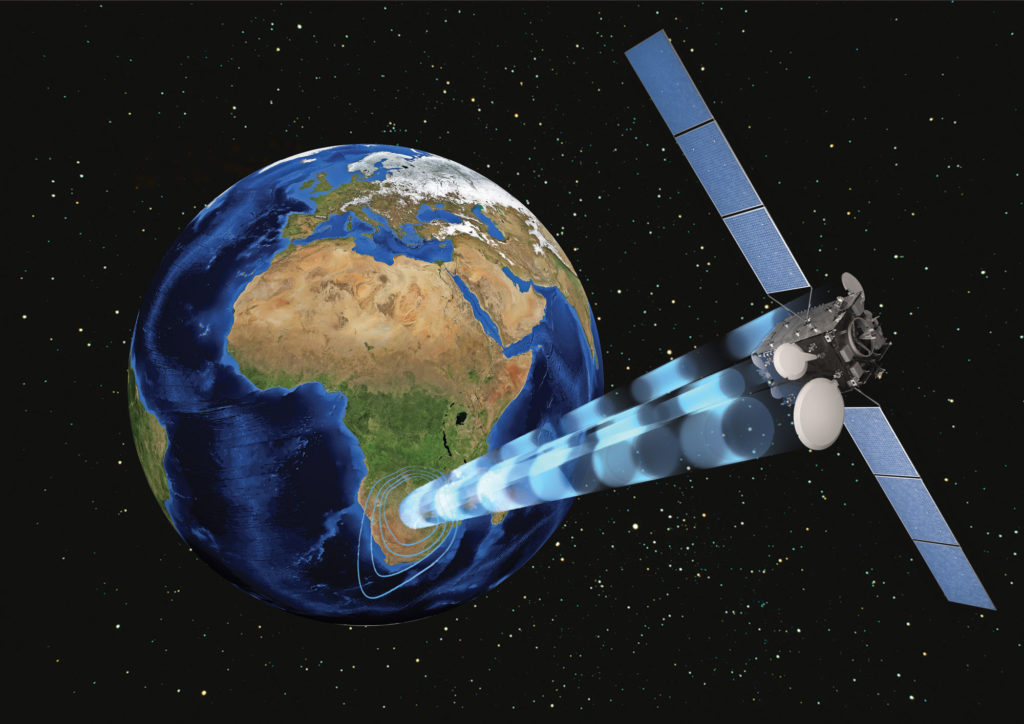An interactive model of Germany’s smart communications satellite
On 6 July 2023, the Heinrich Hertz mission became the first German communications satellite to be launched into space on the last European Ariane 5 rocket to research and test new technologies and communications scenarios. This mission is thus contributing to the information society in Germany. The mission is being conducted by the German Space Agency at DLR in Bonn on behalf of the Federal Ministry for Economic Affairs and Climate Action (BMWK) and with the participation of the Federal Ministry of Defence (BMVg). OHB-System AG was commissioned to develop and build the satellite. The complete payload development and integration was carried out by Tesat Spacecom GmbH & Co. KG. IABG GmbH was commissioned to perform the environmental tests. New ground station antennas were built in Hürth and Neustrelitz for the ground segment. The satellite control centre was set up in Bonn. A total of 42 partners are involved in the mission, of which 14 are involved in the scientific and technical payload. An interactive model of the Heinrich Hertz satellite will be on display in the Space Pavilion at ILA 2024.
Demands on communications satellites are growing as rapidly as global communication is increasing. For this reason, future-proof communications satellites will have to operate with much more powerful technologies. The technologies on board should be able to react smartly and flexibly to future challenges in the field of satellite communications and also support future communications scenarios. Experiments on communications, antenna and satellite technology, which were developed and built by German research institutes and industrial companies, are now being used to verify these technologies in space and test them under real operating conditions. The satellite’s instruments can therefore be flexibly adapted to new technical requirements and market conditions. In a figurative sense, the smart satellite grows with its tasks in space. With the scientific and technical payload of the Heinrich Hertz satellite, an experimental platform will be available in space for the next 15 years, which research institutions and companies will be able to use for communications experiments.
A new era in German satellite communications has already begun with Heinrich Hertz.
Links:
German Aerospace Center (DLR)
German Space Agency at DLR
E-Mail contact-dlr@DLR.de
